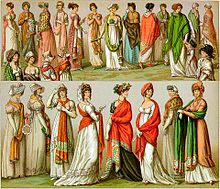Following your birthday visit to Dimbola, and your fancy for the 'dressing up room',
it is time for your Grandmother to teach you a little about the artistry of Style-
and the difference twixt it, and what
Now dear Em, GiGi must tell you and tell you straight. The former is infinitly preferable to the latter term, when one is describing dress-sense! We shall use our good old mid-vics for examples...
FASHION- A popular trend, esp. in styles of dress, ornament, or behavior.
STYLE- A manner of doing something.
In the 1860's London Fashionable Society took elaborate pains to all look the same. To a great extent the same could be said for large sections of Society today, but back then, well one simply did not strike a pose in anything other than what was considered to be the Fashion of the moment. And here we are talking crinolines. Women were boned, structured and hooped, and then upholstered in the latest fabric trend.
Harpers Magasine helped the dear ladies to get accquainted with what one should wear, this is 1874 'street-wear'.
Chic Society took its style tips from the chicest, just as todays bright young thing might trawl fashion blogs for style icons as inspiration. But then, it was the norm to conform.
Just imagine then, when along comes Julia Margaret Cameron slap-bang into the centre of the new fashion of the London Salon ( copied from France, and indeed begun by Julia's beautiful Sister Sarah Prinsep at Little Holland House. ) They invited all the crinolines, and instead of wearing the same- they dared to be DIFFERENT!
The girls would all sit together in the evenings cutting up lengths of brightly coloured silks and velvets, and 'make their own clothes, and not a crinoline in sight' SHOCKING!
In a fashionable centre ( Little Holland House Salon had its own pet artist- G.F.Watts ) in Fashionable London- from our view-point today, we might think that these Ladies would be lauded for their style, splashed across Harpers Magasine ( well, a wood-engraving or two anyhow, ) and Pattle Fashion to become all the rage!?
Non, not in the 1860's. Way too modernist and avantgarde a way of thinking. They were simply gossiped about and maybe even laughed at.
Our dear Julia indeed was described as a ' bas-bleu' ( blue-stocking ) or more unkindly in a description of three of the sisters 'Beauty, Brains and Talent'. A rather stocky Julia, got the Talent award, years before she even began her photographic career.
Now then, take Julia down to the Isle of Wight, where 'boho' overode formal, invent the bright anniline dyes just for her delight, and the un-braided lady adorns her un-crinolined bright silk dresses with curtain sashes, red bonnets and openwork shawls. Slightly less attractive to her overall appearance, I rather suspect was the addition of blackened fingers from photographic chemicals. A Helena Bonham Carter-esque charm somewhat denigrated to mad-old bag-lady most probably.
But Em, I say NO! It may have taken two further generations, and into Ms Virginia Woolf and the Bloomsbury set, but our un-sung Style Guru, certainly made it into Fashion-History in my ( as yet un-written ) book!
Virginia was greatly influenced by her Great-Aunt Julia and Anne Thackeray-Ritchie in particular. And so, begat the bohemian Bloomsbury Style. I also believe that what she did in renovating Dimbola, heralded a new style of 'Colonial' verandah fronted houses built across the road.
Agatha Brazen has another task of investigation.
As I trawl through her photographs, and what her own 'dressing up room must have yielded, it begins to take pre-Bloomsbury shape...
What fun, Emily, as each snippet of writing allows the imagination to construct what clothing at Dimbola on the West-Wight might have looked like in the 1860's. I'm a planning a year of work and a little exhibition.
We begin with the pretty-maids.
Julia's Maids were her Models. They were not below-stairs. Mostly, they were being photographed. Often they were not cooking, or cleaning. One was to marry a Lord, much to Julia's delight!
I came across a little snippet that they all wore 'little knitted waistcoats'. I rather think that Julia masterminded this- and if so- it is highly likely given the influence her French-born stylish Mother bequeathed, that the Empire-line would be preferred in the Court of Queen Julia.
So here we are Em, Blue-Peter stylee once again-
One I felted earlier. Little knitted waistcoat, as I see it. Later to be embroidered just a bit ( not too much as it would not have been 'fitting'. )
In the style of one of her photographs.
What do you think Em?
Happy second birthday, my precious girl!
Lots of love from GiGi xx












